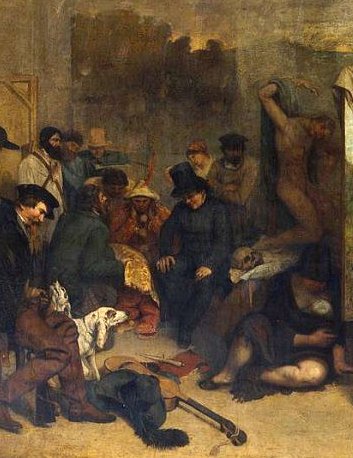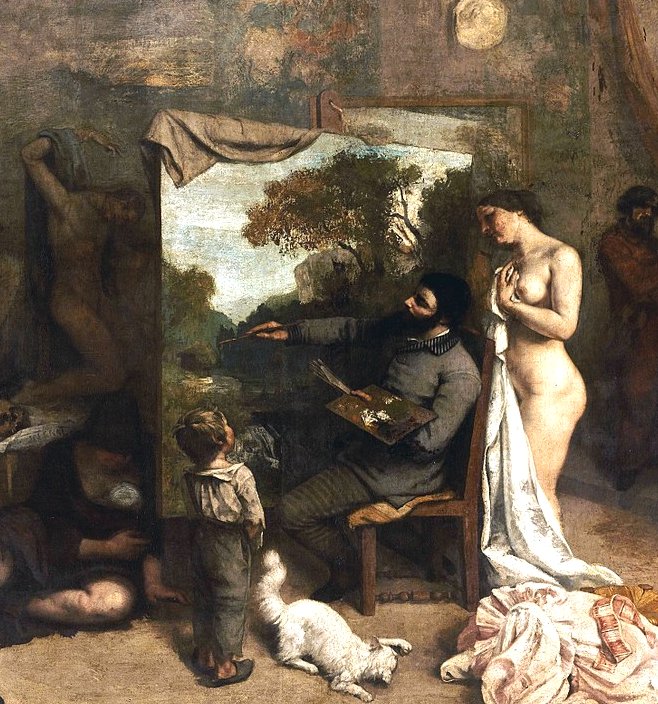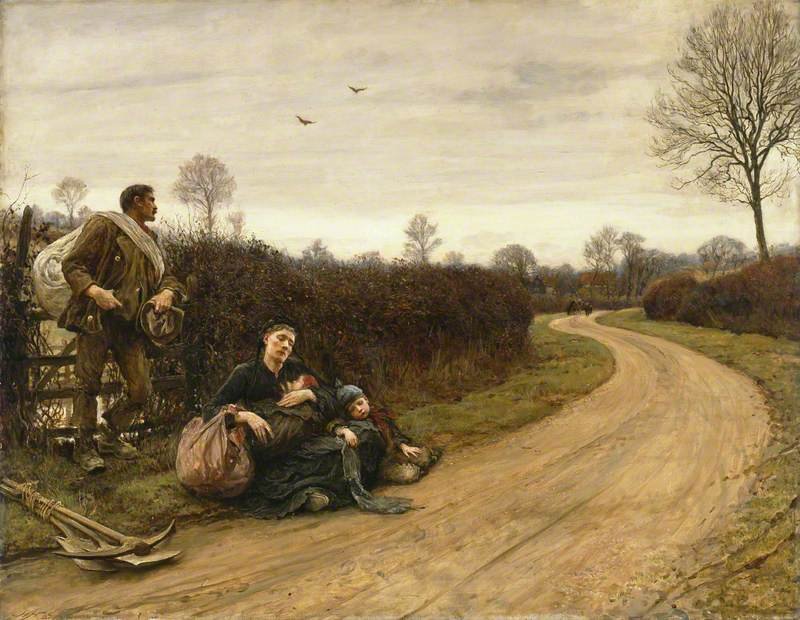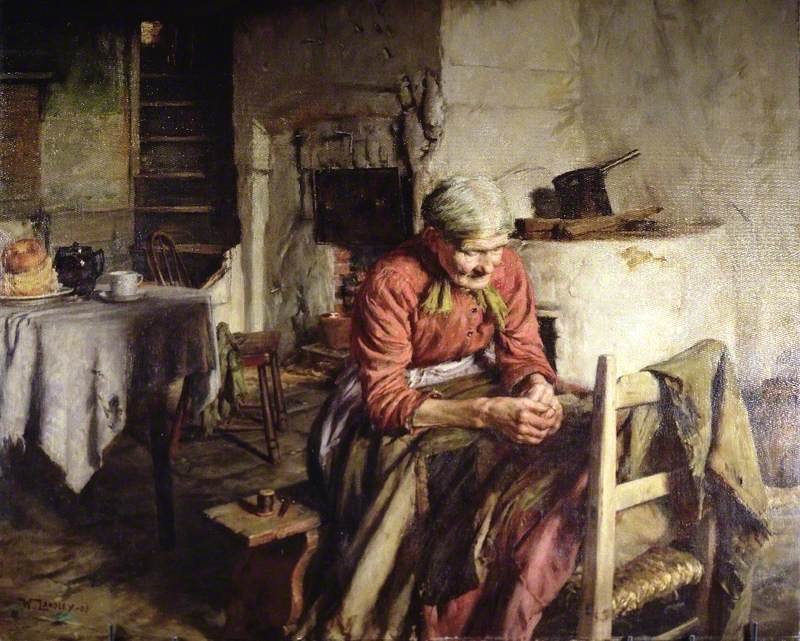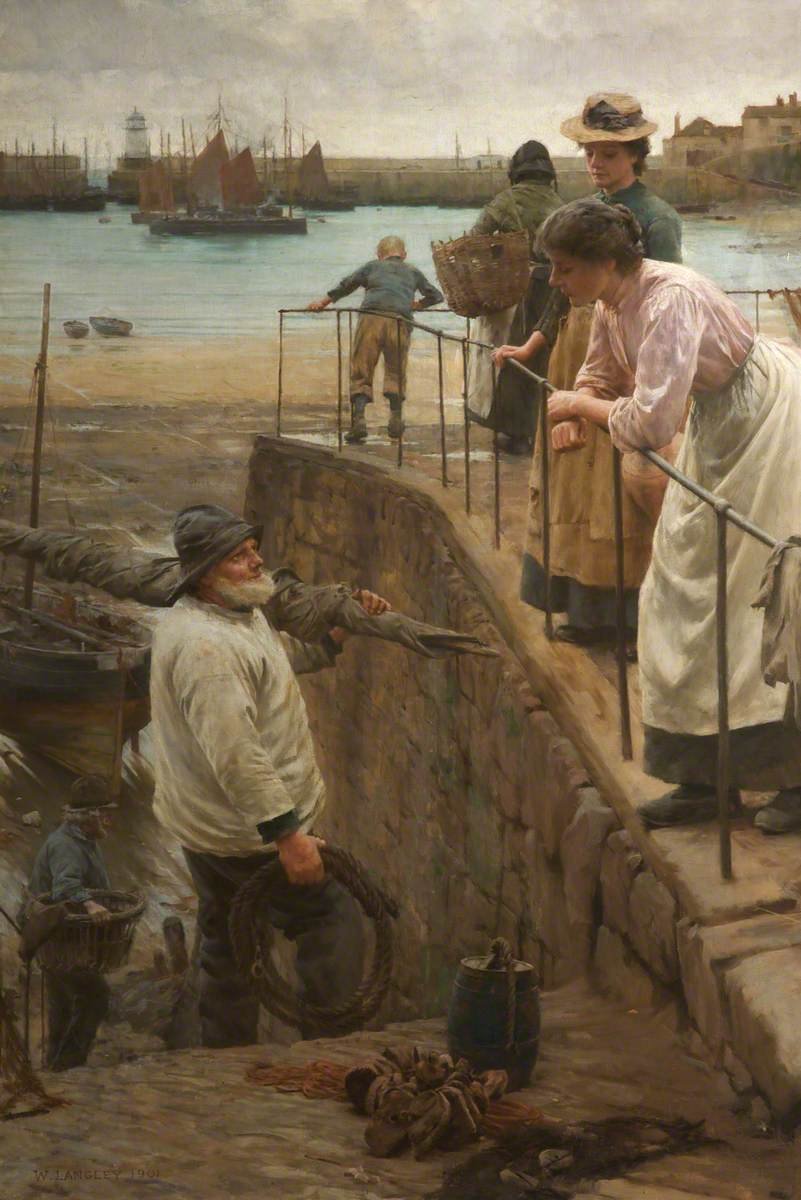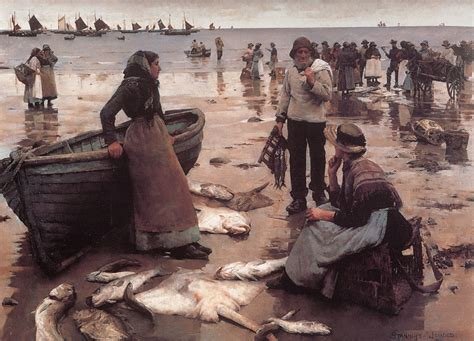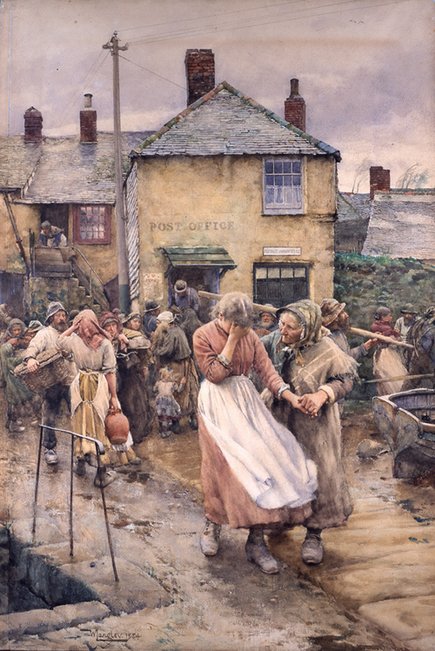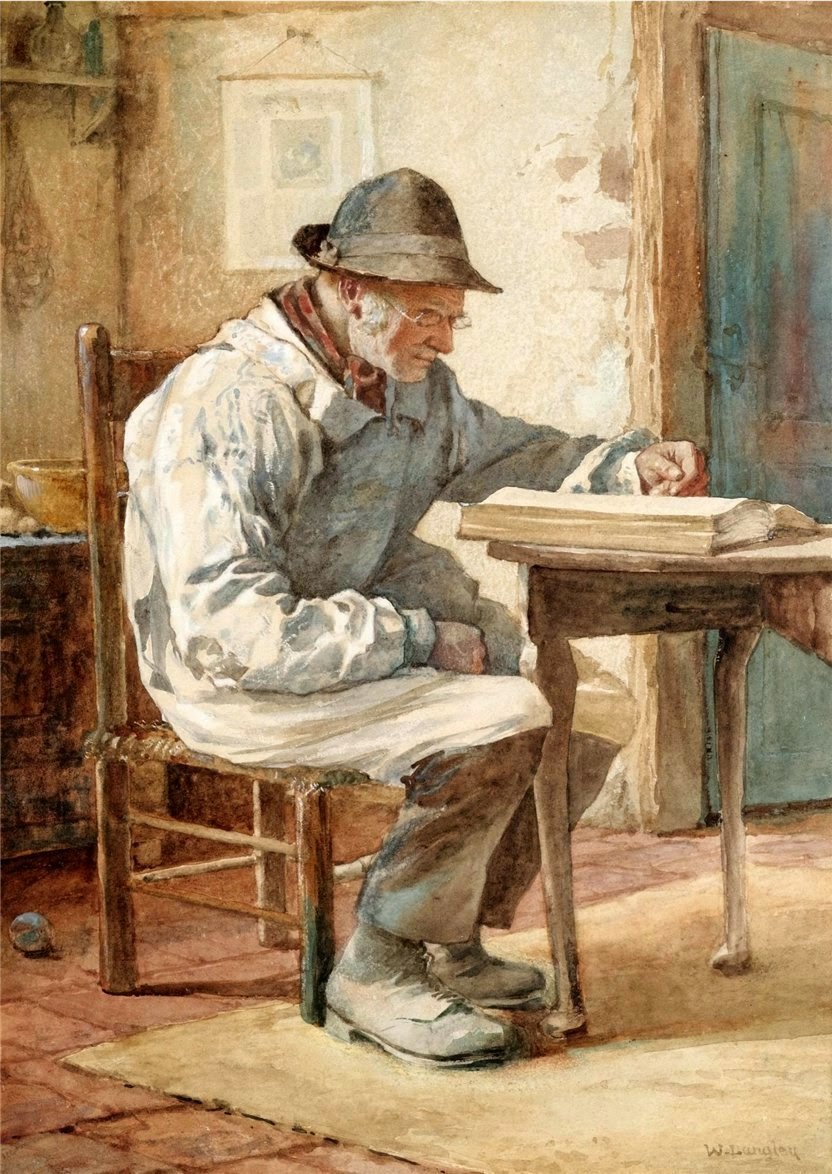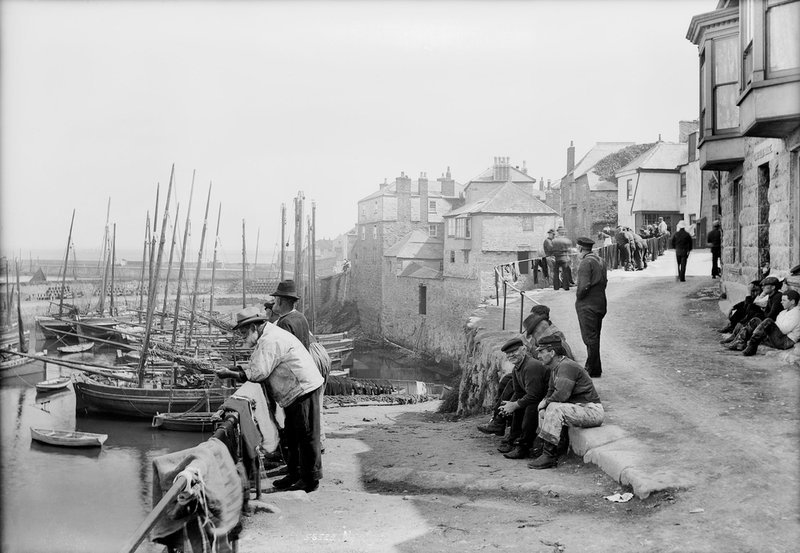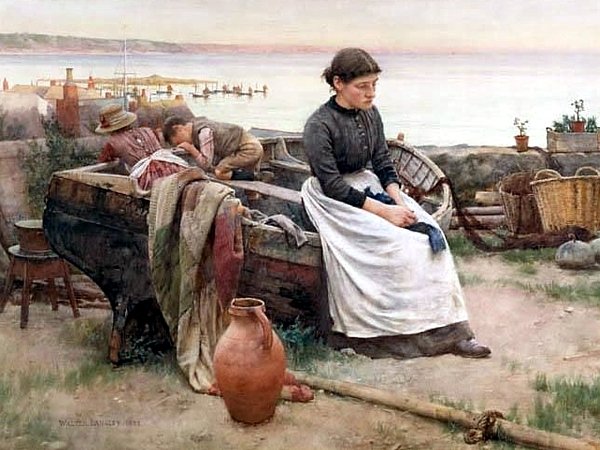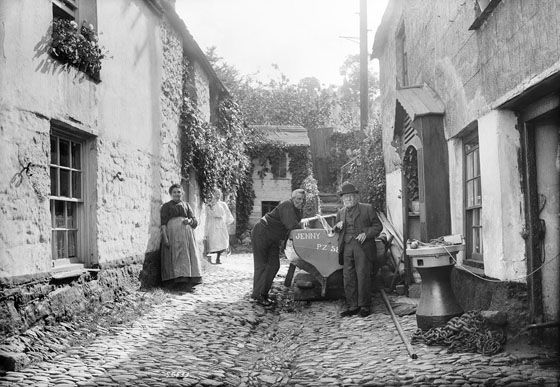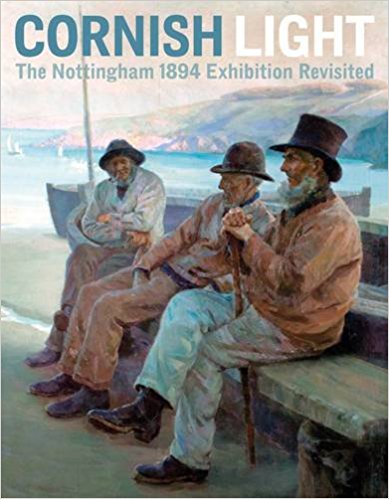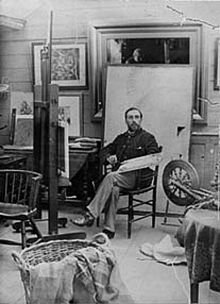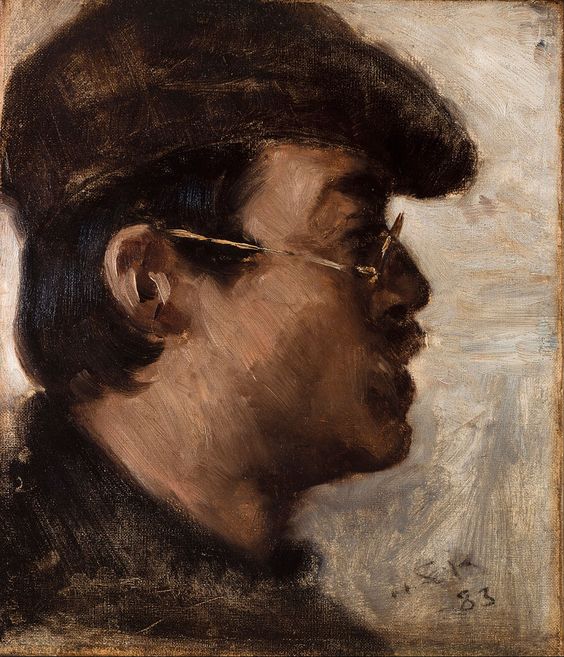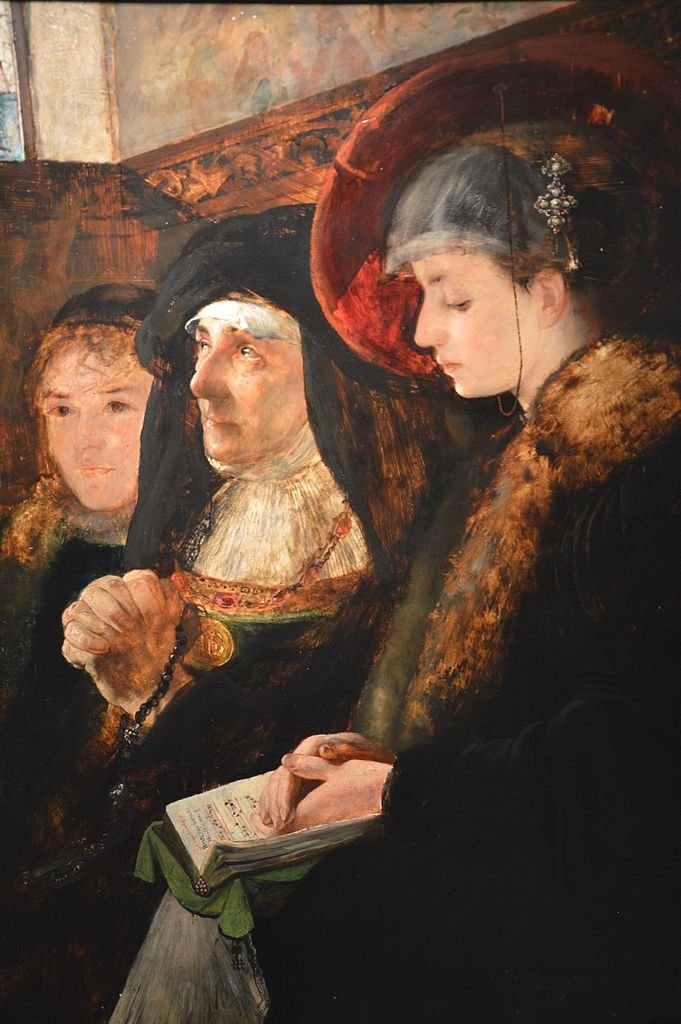
In my last blog I looked at the life and works of the Social Realist painter Walter Langley and his depictions of the hard life endured by the Cornish fishermen and their loved ones. Today I am looking at an American artist whose paintings could not be more different. Daniel Ridgway Knight chose to depict pretty young women enjoying life. The depiction of these ladies in beautiful countryside setting, lit up by dazzling sunlight was, although very popular, so different to the work of artists of the Realism genre. So why would people want to buy paintings depicting scenes which in reality were just something we would like life to be? Maybe that is the answer to the question. Maybe whilst enduring real life with all its hardships we hanker after the perfect life even if it is just an imaginary idyll. If you had to choose a painting to hang on the wall of your lounge would it be one which depicts poverty or one which depicts sunny meadows awash with flowers and beautiful women?

Daniel Ridgway Knight was born into a strict Quaker home, on March 15th, 1839, in Chambersburg, Pennsylvania, a town thirteen miles north of Maryland and the Mason-Dixon line. He attended local schools and his family intended that he would either work in a local hardware store or in his uncle’s ship building company, but for Daniel his love of art was his overriding passion and in 1858, at the age of nineteen, he enrolled at the Pennsylvania Academy of the Fine Arts (PAFA). Fellow students at that time included Thomas Eakins, Mary Cassatt, and William Sartain. Knight also became one of the earliest members of the Philadelphia Sketch Club which was founded by six students of the Pennsylvania Academy of the Fine Arts in November 1860 and is still in existence today.
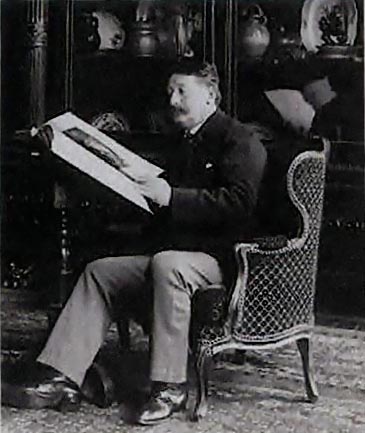
One of the PAFA students who became a friend of Daniel Knight was Lucien Grapon, a Frenchman, and he would often talk to Daniel about his homeland and how Daniel would love to live in France, with its great social life, fine ladies, and its even finer wines. Daniel must have been seduced by the thoughts of life in France as in 1861 he set sail for France, a journey many of his fellow PAFA students would later take. Cassatt and Eakins went to France in 1866.

On arrival in Paris, Daniel Knight enrolled at the Ecole des Beaux-Arts and attended classes run by Alexander Cabanel as well studying in the atelier run by the Swiss artist, Marc Gabriel Charles Gleyre. During his time in Paris Knight made a number of friends with fellow artists such as Renoir and Sisley. He also took trips to the artist colony at Barbizon where he was influenced by the works of the plein air painters. His stay in France lasted just two years but was curtailed when he received grave news from home about the state of the American Civil War which had started the year he left for France. Even more worrying for Knight was that by 1863 the war had spread north with the soldiers of the Confederate army, led by General Robert E Lee invading his home state of Pennsylvania. In a patriotic gesture, twenty-four-year-old Knight returned to Philadelphia and on August 17th, 1864, enlisted in the Union Army as a Private in Company K, 5th Cavalry Regiment Pennsylvania. When not engaged in battle Knight took the opportunity to make sketches of the battle scenes as well as portraits focusing on the facial expressions of his fellow soldiers. Knight later presented many of his sketches at meetings of the Philadelphia Sketch Club.

At the end of the Civil War, Daniel was discharged from the Union army and he returned to Paris to complete his studies at the Ecole des Beaux-Arts. On completion, he went back home to Philadelphia and opened a workshop where he worked on his portrait commissions and also held classes for aspiring painters.

In 1867 Daniel Knight completed an historical painting, The Burning of Chambersburg, Pennsylvania, which depicted an infamous incident in the Civil War. On July 30, 1864, Brigadier General John McCausland and 2,800 Confederate cavalrymen entered Chambersburg and demanded $100,000 in gold or $500,000 in greenbacks. The residents of Chambersburg failed to raise the ransom, and McCausland ordered his men to burn the town. Flames destroyed more than 500 structures leaving more than 2,000 homeless. Chambersburg was the only Northern town the Confederates destroyed. The attack inspired a national aid campaign and spurred the Union Army to a more aggressive approach that finally won the war.

It was at his Philadelphia studio that he first met Rebecca Morris Webster, the daughter of Colonel Thomas Webster Jnr, who was one of his students. On September 20th, 1871 the couple married in St Luke’s Church Philadelphia. For the next twelve months Daniel took on many portrait commissions and with the money he earned from them, he had enough for two boat tickets for himself and his wife and they returned to France where they would remain for the rest of their lives.

Daniel and Rebecca first went to live in Saint Germain Des Prés, on Paris’ Left Bank and then later in 1872, they settled in Poissy, where Walter had bought a vast 17th century house. The property had belonged before him to the Arbien-Caulaincourt family. The house, which until the early 1920’s, was located at what is now, 24 avenue Meissonier and was sometimes referred to as the Abbey Castle.

To ensure that he was able to capture the true colours of the daylight which may have been lost in studio painting he built a glass-enclosed studio, separate from the house, so he could paint comfortably “indoors” while still capturing the true colours fully in its natural surroundings. This would allow him to position his models there notwithstanding the weather conditions outside even during the coldest winter’s day, and still make the best use of the natural light. Such protection from inclement weather in a controlled environment made for a perfect studio. His models would be dressed in peasant costumes and sometimes he would actually use local girls to sit for him.

Photo Agnès Guignard
The French Classicist painter, Ernest Meissonier, had occupied the neighbouring property since 1846 and it still exists. Meissonier completed most of his paintings in his studio there as well as conducting art classes for his students. In the photograph above, dated around 1880, we see three buildings. On the left is Meissonier’s house, Daniel Ridgway Knight’s house can be seen in the centre and to the right is the Notre-Dame collegiate church, which was once the l’abbaye aux dames. It was a truly magnificent building which Knight spent years and much money on restoring and refurbishing it.
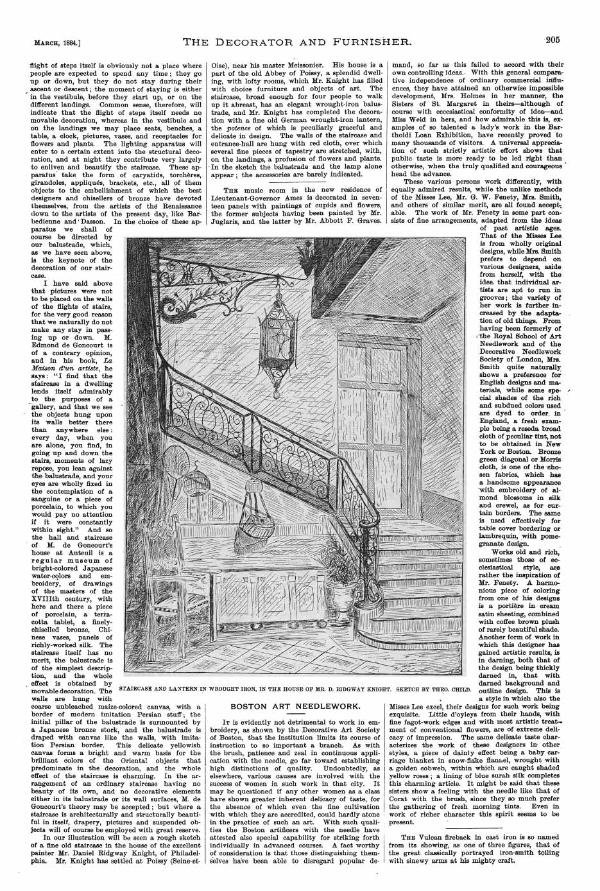
The interior of his house was commented on, and a sketch made of the elaborate main staircase in the March 1886 edition of the New York published magazine The Decorator and Furnisher:
“… In our illustration will be seen a rough sketch of a fine old staircase in the house of the excellent painter Mr. Daniel Ridgway Knight, of Philadelphia, Mr. Knight has settled at Poissy (Seine-et- Oise), near his master Meissonier. His house is a part of the old Abbey of Poissy, a splendid dwelling, with lofty rooms, which Mr. Knight has filled with choice furniture and objects of art. The staircase, broad enough for four people to walk up it abreast, has an elegant wrought-iron balustrade, and Mr. Knight has completed the decoration with a fine old German wrought-iron lantern, the potence of which is peculiarly graceful and delicate in design. The walls of the staircase and entrance-hall are hung with red cloth, over which several fine pieces of tapestry are stretched, with, on the landings, a profusion of flowers and plants. -In the sketch the balustrade and the lamp alone appear; the accessories are barely indicated…”
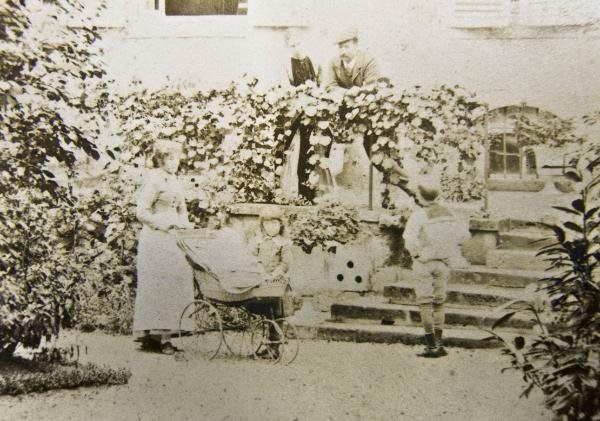
His neighbour was the painter Ernest Meissonier who had bought his large mansion which was sometimes known as the Grande Maison. The Grande Maison included two large studios, the atelier d’hiver, or winter workshop, situated on the top floor of the house, and at ground level, a glass-roofed annexe, the atelier d’été or summer workshop. Meissonier, not only became a good friend of Daniel Ridgway Knight but acted as his artistic mentor. Daniel Knight and his wife Rebecca went on to have three children, all boys. Louis Aston Knight was born in August 1873. His godfather and godmother were the son-in-law and daughter-in-law of Meissonier, Gustave Méquillet and Jeanne Gros. Louis became a very talented and successful landscape painter. Charly Meissonier Knight, was Rebecca and Daniel’s second child, born in 1877, and Meissonier himself was his godfather. He later became a well-known architect and made a speciality of restoration of houses in Paris and country chateaux. The youngest child, Raymond Knight, was born in 1878 but died at the age of thirty-six in 1914.

By 1874, Knight had to decide what he wanted to paint. In the early days he was happy with his historical paintings and on his return to Philadelphia after the Civil War he had made money with his portrait commissions but now he wanted to do something altogether different. That year he again visited Barbizon and saw the works of Jean-Francois Millet with his depiction of French peasantry and he believed he should follow this theme for his paintings. The one thing he didn’t like about Millet’s depictions was that Millet’s works were of the Realism genre and the artist had focused on the hardships suffered by the peasants.
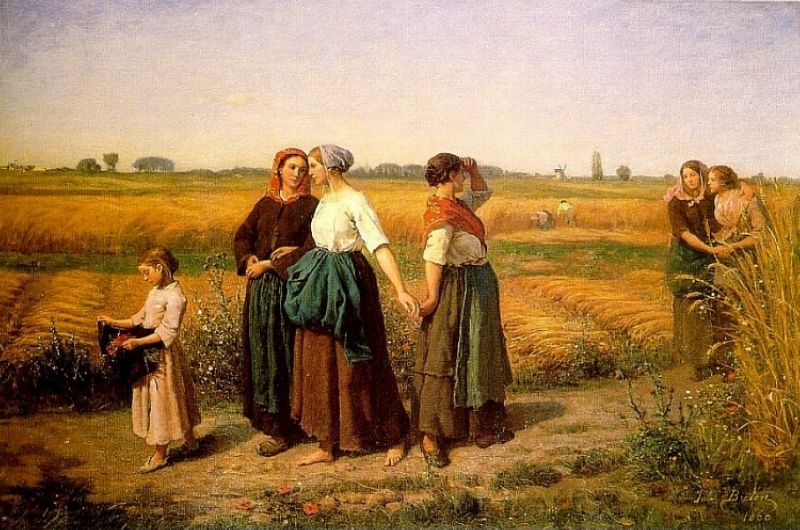
Knight decided that his depictions of the peasantry would focus on the joys of the countryside and the happiness of the peasants whether they were at work or enjoying their leisure time. He was influenced by the works of the French artist, Jules Breton and, although he too is classed as a Realist painter, his depictions, which are also heavily influenced by the French countryside and the peasants working the land, are, in the main, a celebration of the beauty and idyllic vision of rural existence, as can be seen in the painting above, The Reapers which he completed around 1860.
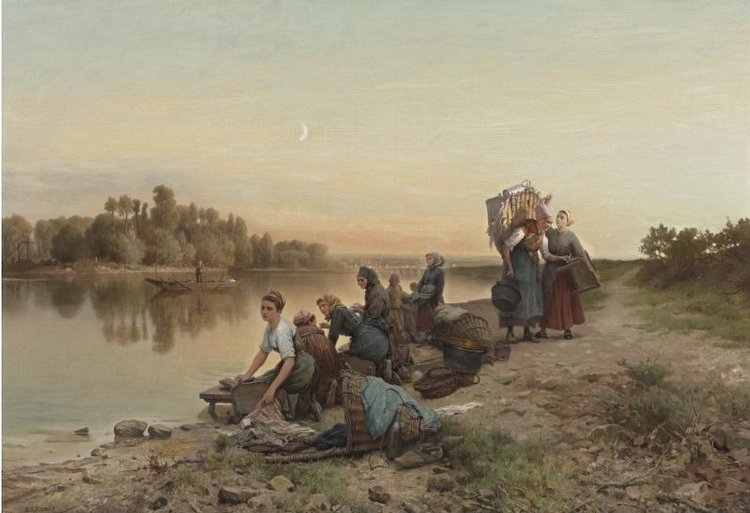
Meissonier was a great believer in Knight’s talent as an artist and one day set him a challenge to produce a large painting from a sketch he had made. The result was Les Laveuses (Washerwomen) which resulted in Knight’s first big success at the Salon in 1875.

In 1888 Daniel Ridgway Knight painted several large paintings for major exhibitions, and Hailing the Ferry, was regarded as one of his masterpieces. When it was exhibited at the Paris Salon of 1888, it was awarded the third-class gold medal. He was also awarded a Gold Medal at the Munich Exhibition that same year for this work. It can now be seen at the Pennsylvania Academy of the Fine Arts. The depiction is of two peasant girls calling for the ferryman on the other side of the river. The beauty of this work is how Knight captured all the elements of the subdued light and colour, together with the way he added the finely detailed figures which highlighted his constant focus on detail.

Daniel Knight’s genre scenes were very popular with buyers on both sides of the Atlantic and they enhanced his reputation as a great painter. One of his popular works was entitled Coffee in the Garden. The setting is the outside of a rural house/café. The pink and grey colour of the rough plaster of the building contrasts with the various colourful flowers in the window boxes and plant pots which brighten the building’s façade. In the background our gaze is carried along the River Seine. We can see the calm waters of the river meandering quietly on its journey along the wide valley towards the sea. In this work we see a group of three women sitting around a wooden table on cane-bottom chairs and a wooden stool. A young boy approaches them carrying a large pot of coffee. The ladies await patiently holding their empty porcelain cups in readiness. To the left we see a carved wooden table bearing a tureen of soup, a ladle, and a pile of empty shallow bowls. Next to the tureen are two empty bottles and a broken loaf.
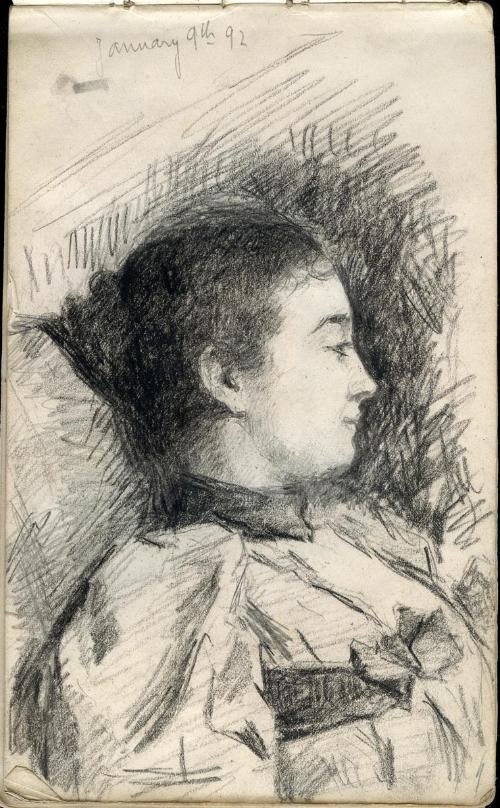
In the mid-1890’s, Daniel Ridgway Knight signed a contract with the well-known and much respected art dealers, Knoedler, who had many galleries in New York and Paris. The company would act as sole agents to sell all his paintings. This was an added boost to his income stream and shortly after the contracts were signed Knight decide to buy another large house.

It was around 1896 that Daniel Knight and his family left their home in Poissy to live in their new home at Rolleboise, some forty kilometres down river from Poissy. The Knight family’s new residence had breathtaking views of the River Seine as it was positioned atop an elevated headland overlooking the river. His home had a beautiful garden and terrace that overlooked the Seine and it was that view that often appeared in his painting. It was a stunning vista which overlooked the cascading rooftops below, and, all the way along the River Seine which flowed between miles and miles of fields, meadows, and lines of trees. Besides carrying on with his own paintings, Knight held classes at his house for aspiring artists and this led to the foundation of the Rolleboise School.

One of his first paintings after he moved to his new home was his 1896 work, The Shepherdess of Rolleboise. In the painting, which combined a grey and silver palette, we see a French shepherdess. Her youth and loveliness are seen against a pastoral background on the bank of the River Seine. As she gazes out at the water her charges feed themselves on the grassy bank. The work was exhibited at the 1896 Salon and was well received. It was Knight’s take on peasant life that appealed to the many American buyers who would rather witness the beauty and romanticism of peasant life rather than the harsher realities of their lives depicted by the Realism painters of the time. Knight’s work was closer to the Naturalism genre which was practiced by the great French painter, Jules Bastien-Lepage.

In 1889 Knight was awarded a Silver Medal at the Paris Exposition and was knighted in the Legion of Honour, and later in 1914, becoming an officer. In 1896 he received the Grand Medal of Honour at the Pennsylvania Academy of the Fine Arts.
Daniel Ridgway Knight died in Paris on March 9th, 1924, a week before his eighty-fifth birthday. Ridgway Knight’s paintings continued to be popular in the twentieth century, particularly in America and still, even now, realise high prices at auction.




